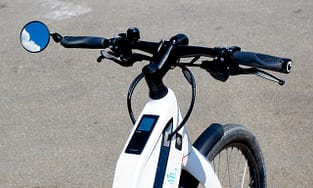
Electronics bikes, simply E-bikes, offer various benefits, including superior climbing efficiency and better range. If you also struggle with joint pains, investing in an e-bike can breathe a new life into your cycling exploits. Ideally, electric bikes offer the same benefits as their traditional counterparts, only that they are powered to provide some degree of assisted features. Now that you are aware that an E-bike is a worthwhile investment, you need to think about getting one. There is a wide selection of electric bikes at https://electric-biking.com/hunting-bikes/. And each has a host of unique features. That said, here are some factors to consider when buying your first E-bike.

Nature of Drive
There are two main types of electric bikes, “pedelec” and the “twist-n-go.” Pedelec bikes are known for their ability to monitor a rider’s pedaling action intelligently, and then add a certain amount of assistance. And whenever you attain the top speed, this feature is deactivated for safety reasons. On the other hand, the pedal-assist feature twist-n-go bikes are activated using a switch. This means that the rider chooses when and for how long they need assistance.
Motor Mount
The motor in an electric bike can be mounted on one wheel, at the crank and pedal area, or the bottom of the frame. The nature of the motor mount determines the suitability of the bike to different biking situations. For instance, crank assisted bicycles are recommended to individuals who ride of steep terrains. Besides the mounting position, you also need to pay attention to the type of motor. Some motors tend to be a lot quiet, powerful, and anything in between. For starters, make sure you go for a bike with an engine that enjoys a solid reputation among riders.
Range
The range is essentially the distance the bike travels on one charge of the battery. This is one of the most important parameters to consider, especially if you go for long rides, and you do not want to run out of juice before you get back home. The bike’s range is affected by several variables, including the terrain, weight of the bike, battery rating, and the speed. For starters, if you do 20km daily, then you should go for a bike that matches this range or higher. Buying a bike with a higher range than you currently needs takes care of the possibility of range drop due to the battery’s wear.
